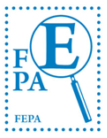FEPA Medal for Exceptional Study and Research 2022
Jürgen Herbst (Germany)
for “Handbuch der sächsischen Francomarken sowie deren Entwertung”
Herbst’s work aims to represent current knowledge about the design, printing and use of Saxon stamps. The content is illuminated with numerous illustrations. Almost all essential pieces of Saxon philately could be presented from archives, collections and auction catalogues. An attached catalogue section depicts actual market prices, whereby an attempt was made to adjust data from previous sources. The work is thorough and well written. The text refers to sources where necessary. The section on cancellations is based entirely on the author’s own observations. The bibliography and index at the end are exemplary. The author’s own research can be summarised as follows:
• Design and Printing. For the production and reproduction of the clichés and plates of the Saxon stamps, processes were used that were unusual, in most cases even unique, in stamp printing at the time. The former applied to the combined colour and embossed printing from one plate, the latter to the use of glyptography in the production of the clichés of the first cross-band stamp as well as the reproduction of the intaglio printing plates by way of galvanoplasty. In all earlier publications in journal articles and manuals accessible to the author, the corresponding processes have either not been recognised or wholly misrepresented. This is true for glyptography because the process itself was largely unknown, and for electroforming because its application to gravure plates was developed for map printing and was entirely uncommon and unknown in stamp printing. The handbook presents these processes in detail for the first time.
• Postmarks and cancellation types. The postmarks used during the stamp era are shown with their purpose. The author’s file, built up over more than 50 years, allows a good delimitation of the corresponding periods of use. • Usage options and tax regulations. All permissible uses for stamps are listed with the corresponding taxes. All foreign taxes valid for Saxony could be determined for the first time. Their dates, which sometimes changed quickly, required research in numerous non-printed sources from postal files.
